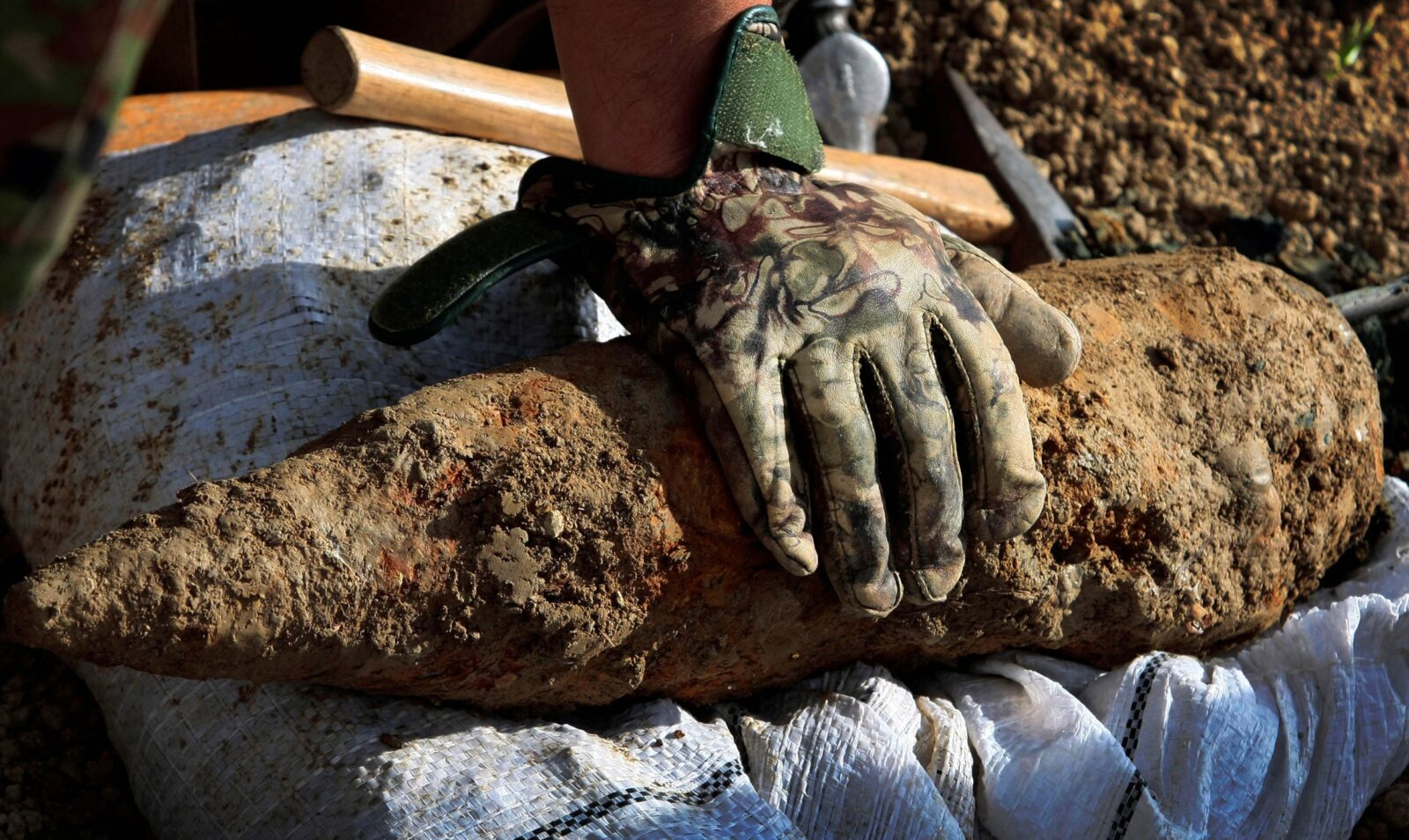

Decades after World War II ended in September 1945, its effects can still be felt, seen, and heard.
On Wednesday, the Japanese Maritime Self-Defense Force conducted an underwater detonation of 315 artillery shells, grenades, and bullets, roughly a half-mile offshore at Naha Port’s Shinko Wharf, in Okinawa.
The unexploded ordnance was recovered during dredging of Naha Port between March and Nov. 2021. A total of 634 munitions were recovered during dredging operations, a city official for Naha told Stars and Stripes. In December, 319 munitions were disposed of in a similar fashion.

The munitions are one part of the ongoing legacy of the Battle of Okinawa, where Army and Marine Corps forces battled the Japanese Army for nearly three months in some of the fiercest fighting of World War II. In the last 50 years, 2,094 tons of unexploded ordnance have been recovered and disposed of in the Okinawa prefecture.
“We used to find more in the past, but it was only 14.4 tons last year,” a spokesman from Okinawa prefecture’s disaster prevention and crisis management division told Stars and Stripes. “I think it is a good thing that we are finding less and less every year.”
Unexploded ordnance remains one of the ways in which both warfare and military training leave a lasting impact on the environment. On former battlefields around the world, thousands of tons of unexploded munitions remain for decades after peace treaties have been signed. Just a month ago, a World War II-era 550-pound bomb detonated in Munich, Germany after it was discovered at a construction site, injuring four people. In the Baltic Sea, tens of thousands of naval mines planted during WWII remain undiscovered. In 2005, three Dutch fishermen were killed after accidentally reeling in a WWII-era bomb.

In Vietnam, the U.S. invested more than $166 million to clear landmines and other unexploded ordnance. And in Laos, where the U.S. dropped more than 2.5 million tons of ordnance from 1964 to 1973, some of the very people who flew those bombing missions have worked to help clean up the aftermath of war in what is the most bombed country per capita in the world.
In the case of Peleliu Island, in the Palau archipelago of the Pacific, unexploded ordnance left over from fierce fighting between U.S. Marines and Japanese troops remains to this day — and in some cases have been transformed into historical displays. And in December 2017, a pair of World War II-era artillery rounds were discovered at the construction site for an elementary school on Marine Corps Camp Foster in Okinawa.
That means plenty of work for Explosive Ordnance Disposal technicians, in war or peace.
What’s hot on Task & Purpose
- A Marine was asked ‘how many people have you killed?’ His response was perfect
- Abandoned Air Force base with underground tunnels posted for sale on Facebook
- Air Force maintainers are getting new ‘janitor grey’ coveralls
- The Marine Corps is officially flying its ‘most powerful’ helicopter ever
- ‘Sidewalk,’ ‘Terminally Stupid,’ and ‘Meatloaf’ — How military pilots get their call signs
Want to write for Task & Purpose? Click here. Or check out the latest stories on our homepage.
